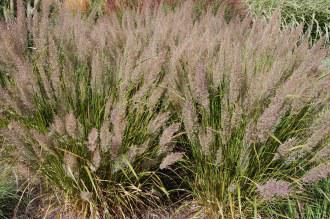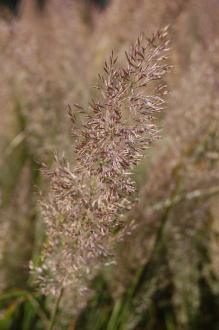
Calamagrostis brachytricha (08/09/2012, Kew Gardens, London)
Position: Full sun to partial shade
Flowering period: Early autumn
Soil: Moist, well drained
Eventual Height: 1.2m
Eventual Spread: 90cm
Hardiness: 4a – 9b
Family: Poaceae
Calamagrostis brachytricha is a deciduous, slow growing, clump forming perennial grass. Its grey/ green leaves are strap shaped, arching and turn yellow in autumn. Its flowers are borne on erect stems, in silver/ gray plumes which have a red tinge. These turn golden brown as the seeds mature in autumn and are retained on the plant during the winter months. This grass may self seed. Its root are rhizomes which aid its spread.
Calamagrostis brachytricha, commonly known as Korean Feather Reed Grass, Foxtail Grass or Diamond Grass, is native to eastern Asia. In its native habitat it grows in moist woodlands and woodland edges. Calamagrostis brachytricha is synonymous with Stipa brachytricha and Achnatherum brachytricha.

Calamagrostis brachytricha Flower (08/09/2012, Kew Gardens, London)
The etymological root of the binomial name Calamagrostis is from the Greek Kalamos menaing ‘reed’ and agros meaning ‘field’. Brachytricha is from the Latin brachy meaning ‘short’ and tricha meaning ‘having hair’.
The landscape architect may find Calamagrostis brachytricha useful as part of a prairie type planting scheme. It looks fantastic when planted en mass.
Ecologically, Calamagrostis brachytricha seed is attractive to some birds and mammals.
The Royal Horticultural Society has given Calamagrostis brachytricha their prestigious Award of Garden Merit in 2006.
Calamagrostis brachytricha prefers moist, humus rich, well-drained soils. It tolerates most pH of soil.
Calamagrostis brachytricha requires little maintenance. Old stems may be cut to 15cm above ground level in spring. Large lumps may be divided in mid spring.

